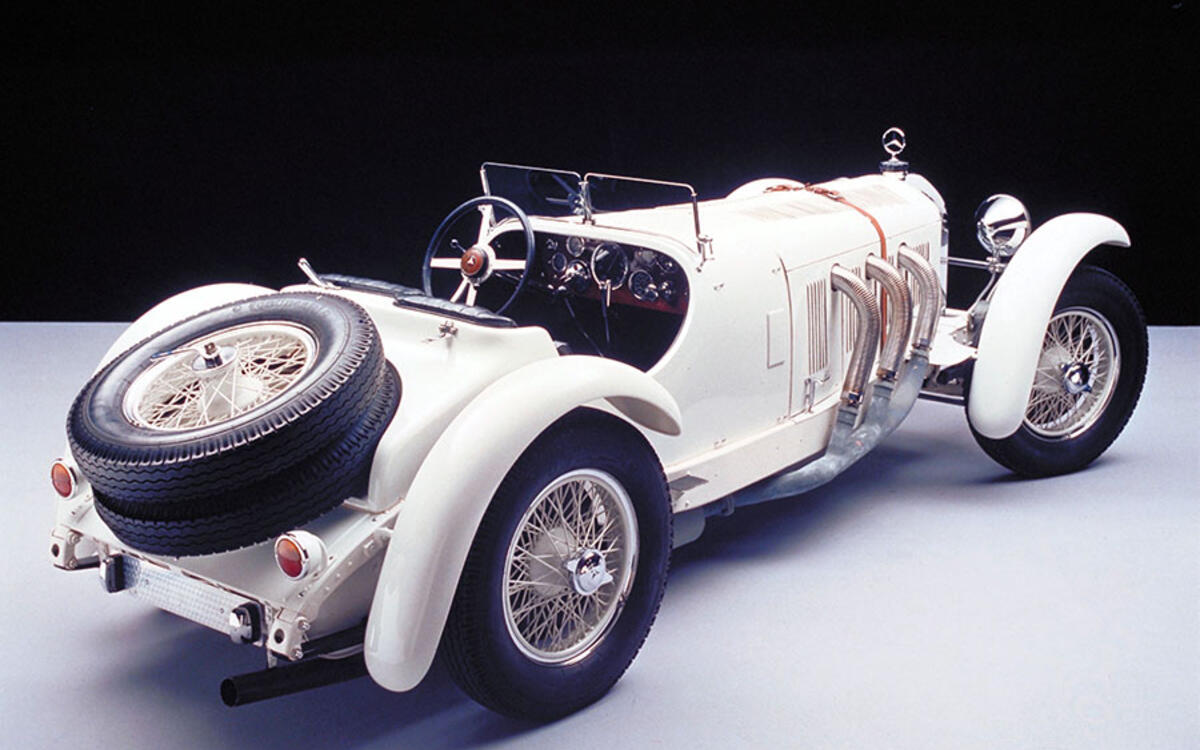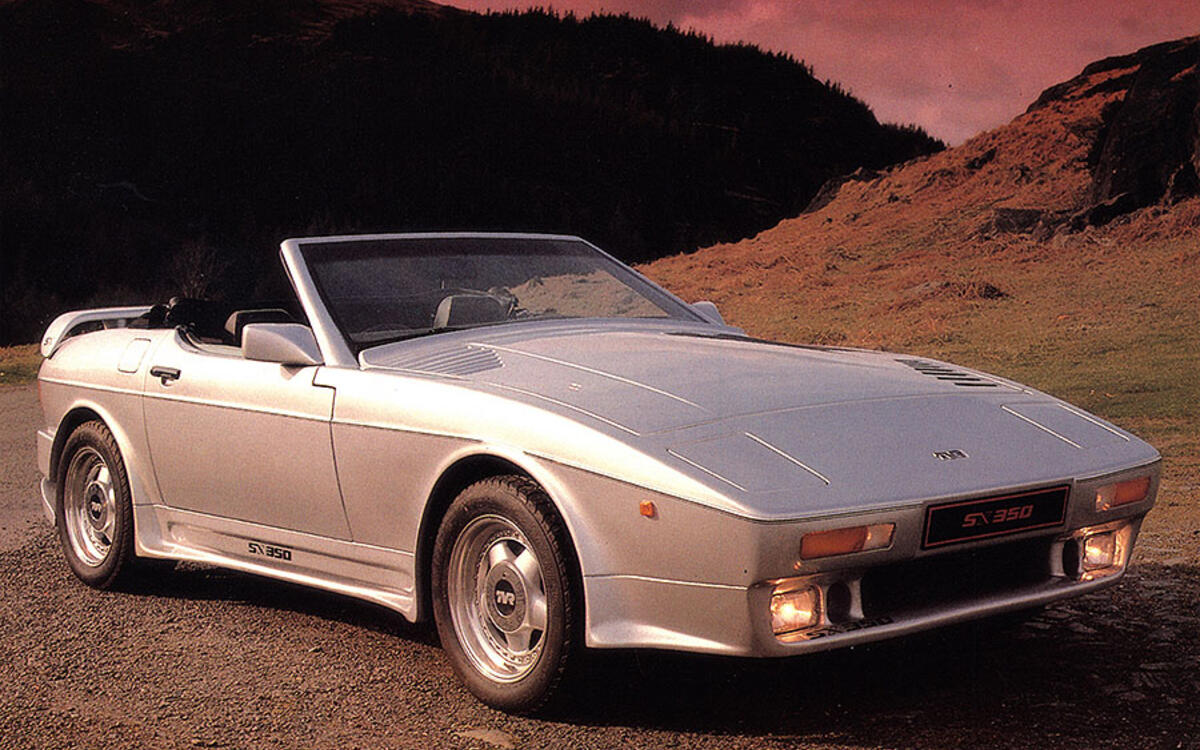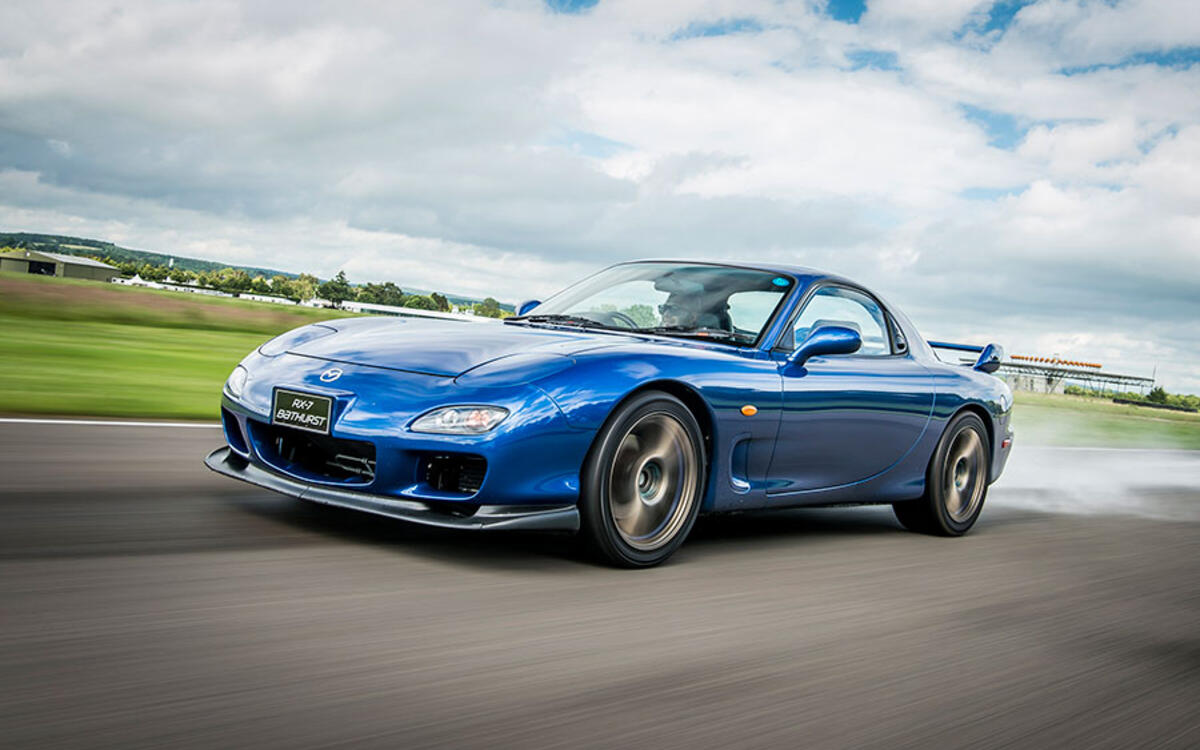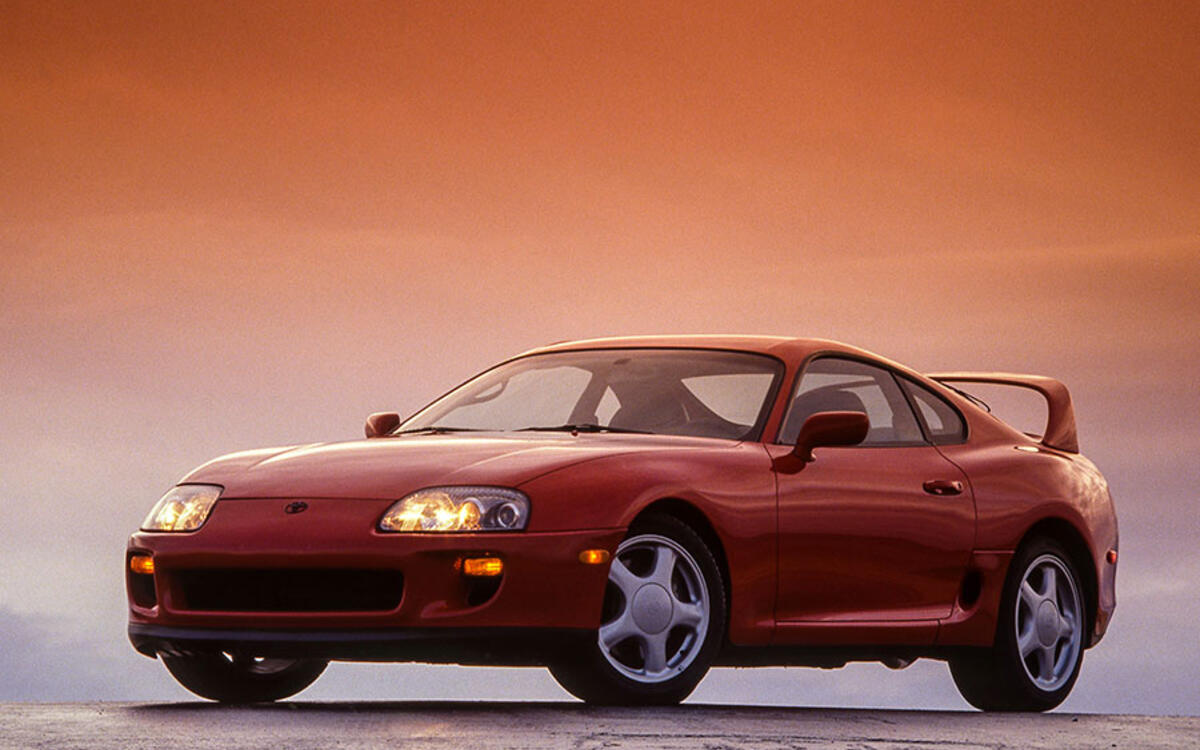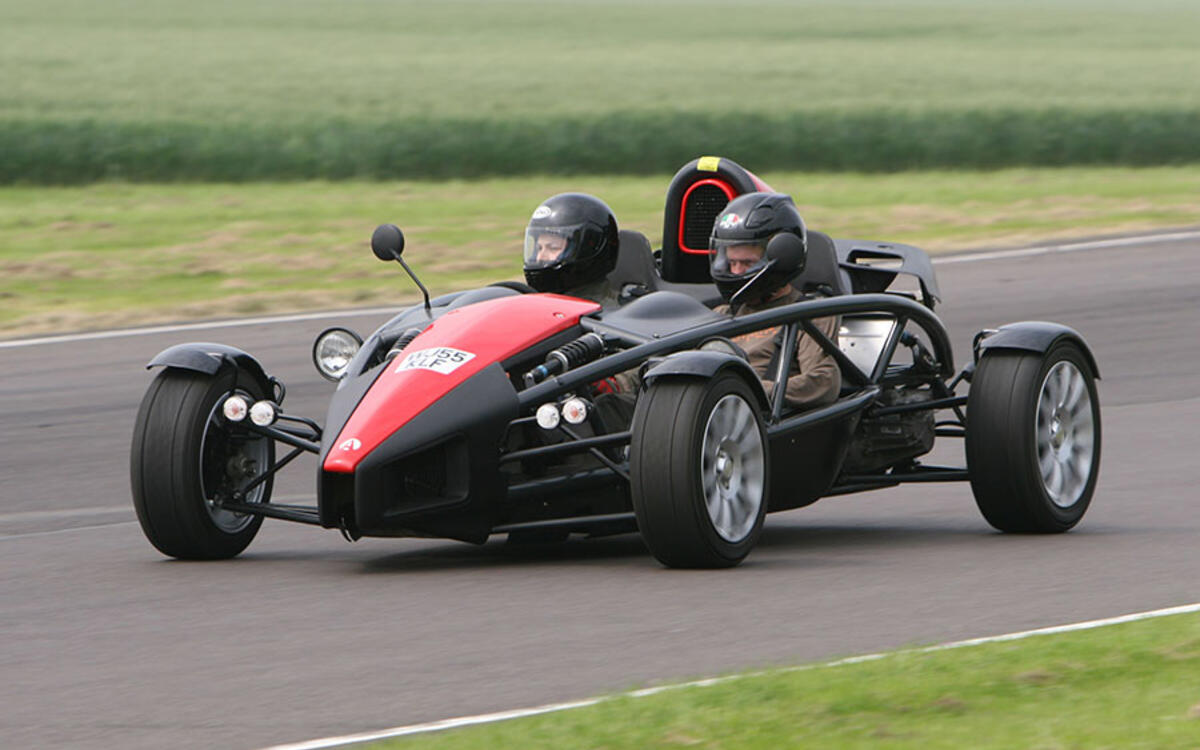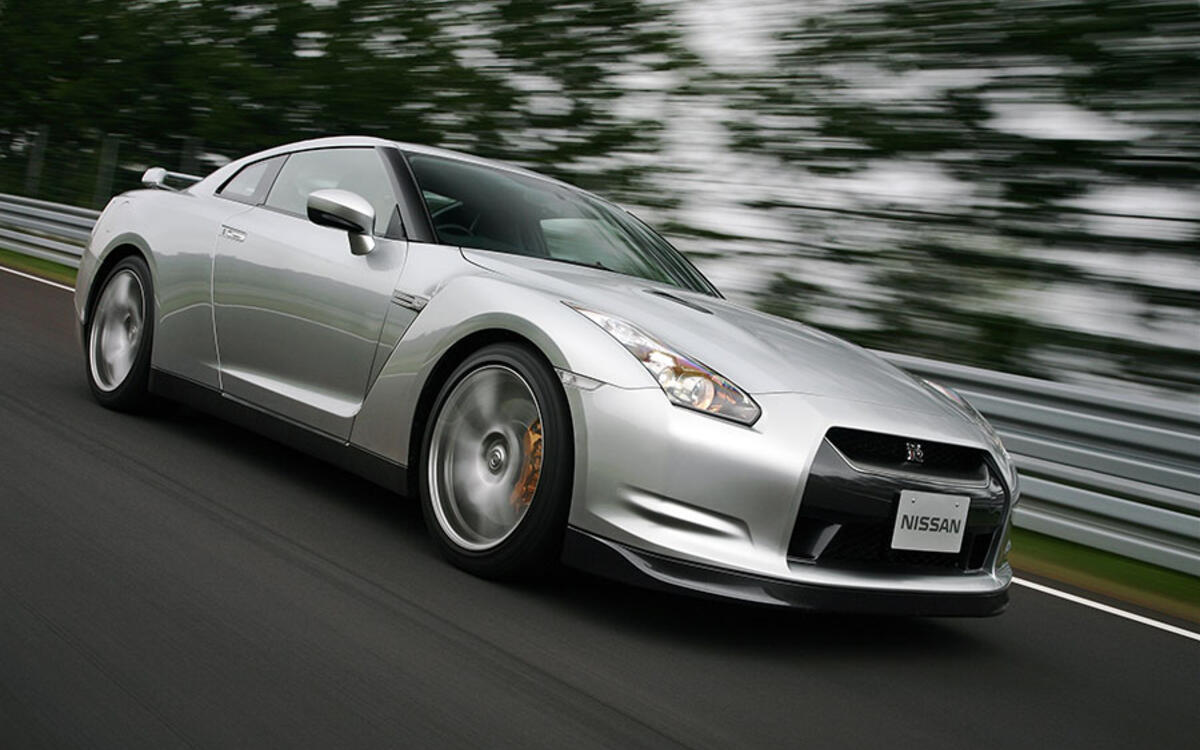 Slide of
Slide of
If you want more power the obvious route is to fit a bigger engine, but there is an alternative and that's to strap on a supercharger or turbo…
Turbocharged small-capacity engines have become the norm, turning the phrase that there's "no replacement for displacement" on its head.
Smaller, lighter and more efficient, turbo engines are no longer the preserve of halo models, but there was a time when such technology was something to shout about. More than 30 years before the first turbocharged car was introduced, the supercars of the 1920s featured supercharging instead. Here we look at some of the great cars with forced induction and picking only 60 contenders took a lot of self control…
 Slide of
Slide of
Mercedes-Benz SSK (1928)
The last car designed by Ferry Porsche before setting up his own company to make sports cars, the SSK was a true racer for the road. It could manage 120mph thanks to a supercharged 7-litre straight-six that developed 300bhp.
 Slide of
Slide of
Bentley 4.5-litre Blower (1929)
WO Bentley despised forced induction, which is why the first 'Blower Bentleys' were created independently of the factory. With a supercharged 4.5-litre engine, fuel consumption was a frightening 2.8mpg at 100mph, and the cars were hideously unreliable, but that hasn't stopped Bentley producing 12 recreations. That's three times as many as were originally built.
 Slide of
Slide of
Duesenberg SJ (1932)
The Bugatti Veyron of its day, Duesenbergs were for the super rich only. With its 320bhp supercharged straight-eight, the SJ could top 130mph, at a time when most family cars could manage barely 50mph from 40bhp.
 Slide of
Slide of
Oldsmobile Cutlass Jetfire (1962)
This was the world's first production turbocharged car. With 215bhp and a 110mph top speed, the Turbo was much quicker than the standard Cutlass, but it was terribly unreliable which is why just 3765 were built.
 Slide of
Slide of
Chevrolet Corvair Monza Spyder (1962)
In its quest to offer the first production turbocharged car, Chevrolet was just pipped to the post by another GM division, but that didn't matter. For 1962 the Corvair Monza was offerd with a turbo kit, to give 150bhp. When this turbocharger kit was specified the car became known as the Spyder.
 Slide of
Slide of
Opel Manta Turbo (1972)
The Manta was Opel's answer to Ford's Capri, and while it never sold in such large numbers as its high-profile rival, it definitely had the style. The Manta had the poke too, once Broadspeed had bolted a turbo to the 1.9-litre four-pot, but just 28 of these officially sanctioned conversions were produced.
 Slide of
Slide of
BMW 2002 Turbo (1973)
Many people reckon this was the world's first turbocharged car, but it arrived a decade too late for that – although it was Europe's first production turbocharged car. It looked the part with those sporty decals and it was fast too, but the turbo lag was nothing short of shocking. Just 1672 were made in a two-year production run (1973-74).
 Slide of
Slide of
Porsche 911 Turbo (1974)
The word 'iconic' doesn't even begin to sum up the 911 Turbo, which is one of the most usable supercars ever created. But early ones were tricky to drive, with huge turbo lag and wayward dynamics. Nowadays all 911s are turbocharged and the rear-engined legend is one of the world's finest sports cars that can be used every day.
 Slide of
Slide of
Mercedes-Benz 300 SD (1977)
Although forced-induction diesels had been built decades before for commercial use, this was the world's first production turbodiesel passenger car. The 300 SD was powered by a three-litre five-cylinder engine but it was offered only in the US.
 Slide of
Slide of
Mercedes-Benz C-111 (1978)
The Mercedes C-111 was powered by a three-litre supercharged five-cylinder diesel engine and it averaged 198.7mph over 100 miles and 195.3mph over 12 hours. Running at the Nardo test track, it claimed a raft of records, including eight for vehicles with any type of engine.
 Slide of
Slide of
Saab 99 Turbo (1978)
Arguably the first ever mainstream production turbocharged car that was genuinely usable rather than too peaky to drive every day. The 145bhp 2.0-litre four-pot was powerful enough to take the 99 all the way to 124mph; in time Saab would become renowned for its turbocharging expertise.
 Slide of
Slide of
Peugeot 604 (1979)
With the Americans suddenly all fuel-conscious, Mercedes had launched its 300 SD for the Federal market, leaving Europe wide open. Peugeot seized the opportunity and was first to sell a turbodiesel car in Europe; its 604. The 2.3-litre engine produced just 79bhp.
 Slide of
Slide of
Audi Quattro (1980)
When the Quattro's blown five-pot was blended with four-wheel drive, the combination proved nothing less than devastating in competition. Until now, 4WD had been for off-roading; the Quattro changed that forever, as you'll shortly see…
 Slide of
Slide of
Ferrari 208 GTB (1980)
While everybody else got a normally aspirated 3-litre V8, in Italy Ferrari buyers got a turbocharged 2.0-litre unit, so the car could escape the punitive tax laws which hammered any car with an engine over two litres. The 152bhp 208 GTB could do 134mph; the 308 alternative was rated at 252bhp and 157mph.
 Slide of
Slide of
Lotus Esprit Turbo (1980)
Bolting a turbo to the Esprit proved to be the making of this flying wedge, which had never really delivered the performance that those looks promised. With a turbo in place, a genuine 150mph was finally achievable.
 Slide of
Slide of
Maserati Biturbo (1981)
Supposedly an alternative to more mainstream sober-suited German machinery, the Biturbo was the world's first production car with a twin-turbo engine. But the car was always too costly and too badly made to compete. That twin-turbo V6 certainly gave the car some pace though…
 Slide of
Slide of
Bristol Brigand (1983)
You'd think a 5.9-litre Chrysler V8 would have poke aplenty, but Bristol strapped on a turbo for a bit more urge anyway; the first time it had ever done so. Few were made though; Bristol owners aren't speed merchants.
 Slide of
Slide of
Triumph Avon Acclaim Turbo (1983)
The eighties was the decade of the aftermarket turbo conversion and there were few as unlikely as this; a boosted version of the geriatric's favourite, the Triumph Acclaim. This was as mild-mannered a saloon as you'd find in the early 1980s, but once Avon had bolted on a turbo to give 105bhp (an increase of 50% over standard), things got interesting.
 Slide of
Slide of
Ford Escort RS Turbo (1984)
Whereas the more popular Sierra was rear-wheel drive, the Escort Mk3 was front-wheel drive, making for some interesting dynamics at full tilt. Offered in white only, with a bodykit, this really was a child of the eighties.
 Slide of
Slide of
Peugeot 205 T16 (1984)
The prettiest of the Group B cars, the T16 shared virtually nothing with the standard 205 as it was essentially just a facsimile of Peugeot's best-seller. However, just like with the standard 205, lift-off oversteer could be lethal…
 Slide of
Slide of
Saab 900 16S (1984)
This was a big deal for Saab when it debuted in 1984. Not only did the 16S pack a 175bhp turbocharged and intercooled 16-valve engine (giving 130mph), but it looked the part too thanks to a stylish bodykit that gave the car a more rounded appearance.
 Slide of
Slide of
Bentley Turbo R (1985)
First came the Mulsanne Turbo, but the arrival of the Turbo R in 1985 heralded a fresh start for Bentley. No longer was it seen as merely a rebadged Roller, although that's all it was of course, albeit with much development to turn it into the world's fastest drawing room.
 Slide of
Slide of
Fiat Uno Turbo (1985)
The Uno Turbo packed a mere 1299cc and just 105bhp, but thanks to its low 925kg of weight there was a tempting 127mph on offer and brilliant agility – this really was the antidote to the 'no substitute for cubic inches' argument. Being Italian it rotted, but it was a blast to drive before it dissolved.
 Slide of
Slide of
Ford Sierra RS Cosworth (1985)
Loved by thieves everywhere, the Sierra RS Cosworth was fast, tunable and highly nickable, which is why many were stolen then set on fire. Just 204bhp was on tap, but that was a lot of power back in 1986.
 Slide of
Slide of
Renault 5 GT Turbo (1985)
Renault's response to the Peugeot 205 GTi, the GT Turbo wasn't the first turbocharged 5 – that was the mental mid-engined Turbo 1 of 1978. This new Turbo was almost normal; it had just 115bhp but weighed a mere 850kg so was an absolute riot to drive.
 Slide of
Slide of
TVR 350SX (1985)
Where would TVR have been without the Rover V8, during its wedge era of the 1980s? This one featured a 3.5-litre unit and was supercharged by TVR dealer Haughins, to give 270bhp and a top speed of 145mph. We wonder if Haughins actually sold any.
 Slide of
Slide of
Mazda 323 4WD Turbo (1986)
This baby Integrale from Japan has long been unfairly overlooked, as it was decently quick, great to drive, practical and reliable; the 149bhp 1.6-litre engine gave a top speed of 124mph. Shame everyone was too busy watching the Lancia instead; now the 323 has all but disappeared.
 Slide of
Slide of
Reliant Scimitar SS1 1800Ti (1986)
The SS1 was initially something of a missed opportunity, with its awkward styling and lame performance thanks to the fitment of Ford 1.4 or 1.6 CVH engines. The turning point came when Reliant fitted Nissan's 1.8 turbo; the SS1 was transformed, but it was too little, too late.
 Slide of
Slide of
Shelby GLHS (1986)
This anonymous five-door hatch carried various name plates in markets around the world, including the Chrysler/Simca/Talbot Horizon in Europe, but in the US it was the Dodge Omni. Carroll Shelby introduced the GLH (Goes Like Hell) hot edition in 1984, a turbocharged version of this from 1985 (the GLH-T), then in 1986 came the ultimate edition; the GLHS (Goes Like Hell Some more), with a 175bhp 2.2-litre engine.
 Slide of
Slide of
Buick GNX (1987)
Although the world's first turbocharged productions cars were from the US, American car makers stuck almost exclusively with naturally aspirated big-displacement engines. One of the few exceptions was this, the (conservatively rated) 276bhp Buick GNX which could accelerate quicker than a Ferrari Testarossa.
 Slide of
Slide of
Ferrari F40 (1987)
The F40 is only one of the most exciting road cars ever created and the last car to be signed off by Enzo Ferrari before he died in 1988. Ferrari planned to build just 400 of these 471bhp slingshots, but by the time the last one was made the tally was 1315 – making the F40 a lot less rare than you think. Still hugely valuable though
 Slide of
Slide of
Lancia Delta Integrale (1988)
The only real-world car that ever came close to giving the Audi Quattro a run for its money, the Integrale was descended from the humble Delta of 1979, ensuring ample practicality to go with the searing pace. It would go on to dominate the World Rally Championship.
 Slide of
Slide of
MG Maestro Turbo (1988)
You'd be hard-pressed to argue that the Maestro was remotely desirable but there was an exception; this blown and body-kitted version which must be the most unlikely hot hatch hero ever devised. With a revised chassis, this was the only Maestro that was truly fun to drive – and quick too with a 0-60mph time of just 6.7 seconds. Only 505 were made.
 Slide of
Slide of
Nissan 300ZX (1989)
The original 300ZX, the Z31 of 1983, was something of a joke thanks to its naff styling and lame performance. But there was nothing funny about the Z32 that followed, with its twin-turbo V6 that pushed out 300bhp.
 Slide of
Slide of
Nissan Sunny GTi-R (1990)
Everyone was too busy cooing over the Lancia Integrale in the early 1990s, to notice this seriously talented piece of kit built for Group A racing, which was sold in many markets as the Pulsar. There was four-wheel drive and a 210bhp turbocharged 2.0-litre engine.
 Slide of
Slide of
Vauxhall Lotus Carlton (1990)
In a world devoid of Audi RSs and AMG Mercs, the Lotus Carlton was a breath of fresh air. Packing a 377bhp twin-turbo straight-six to give a 177mph top speed, this was the ultimate super-saloon of the period.
 Slide of
Slide of
Bugatti EB110 (1991)
Bugatti has never known the meaning of the word 'moderation', which is why the EB110 was fitted with no fewer than four turbochargers, 60 valves and 12 cylinders. The result was a claimed 213mph, although this would seem positively tame compared with what the brand would produce later on, under Volkswagen ownership.
 Slide of
Slide of
GMC Syclone (1991)
Pick-ups have long been popular in the US for their towing abilities and brilliant practicality, but the GMC Syclone turned this on its head. It had a lugging capacity of just 500lb (227kg) but nobody cared; much more interesting was its ability to do 0-60mph in 4.3 seconds, courtesy of a turbocharged 4.3-litre V6 engine and permanent four-wheel drive.
 Slide of
Slide of
Suzuki Cappuccino (1991)
Proving once again that there is a substitute for cubic inches, Suzuki crammed in plenty of technology topped off with a turbocharger and intercooler as its alternative. That's how you get 63bhp from just 657cc, and while the Cappuccino wasn't quick (0-60mph in 11.3 seconds, 93mph top speed), it was a hoot to drive.
 Slide of
Slide of
Mitsubishi Lancer Evo (1992)
All Evos featured a 2.0-litre turbocharged four-cylinder engine and four-wheel drive. The first models had just 247bhp, but power outputs would grow to as much as 405bhp. When Mitsubishi launched the Evo just 2500 examples were available – and the model sold out in just three days.
 Slide of
Slide of
Fiat Coupe (1993)
In the eyes of some, Chris Bangle hasn't produced many masterpieces, but this is undoubtedly one of them. Fast, neat and with distinctive looks, the Coupé was the most powerful (and fastest) front-wheel drive car of its era, with its 217bhp output and 155mph ability.
 Slide of
Slide of
Mazda RX-7 (1993)
The first-generation RX-7 was okay as a sports car, but it wasn't until the third take on the model that things got serious, thanks to the addition of two turbochargers for the rotary powerplant – enough to give 276bhp. But sales proved elusive and now the RX-7 is seriously rare.
 Slide of
Slide of
Toyota Supra (1993)
It began as a range-topper for the Celica line up, but from 1986 the Supra became a model in its own right. It wasn't until 1993 that the first turbocharged car appeared though; with 320bhp, there was 170mph on offer.
 Slide of
Slide of
Subaru Impreza Turbo (1994)
Subaru used to be seen as a builder of go-anywhere pick-ups for farmers, then the Impreza arrived and everything changed. With pace, poise, grip and reliability, the Impreza didn't take long to dominate the World Rally Championship.
 Slide of
Slide of
Jaguar XJR (1995)
Jaguar had offered an XJR in its line up ever since the XJ40 variant of 1989, but it wasn't supercharged. The first XJR with a blower was the X300 edition of 1995; in fact, this was Jaguar's first ever supercharged car and it offered a genuine alternative to the all-conquering BMW M5.
 Slide of
Slide of
Volvo 850 T5-R (1995)
It may have been boxy and bland, but the T5-R was also a serious roadburner thanks to a 250bhp five-cylinder engine and a chassis that provided much more fun than you'd think. Saloons and estates were offered, with the car proving such a success that Volvo extended the production run; 6964 were made in all.
 Slide of
Slide of
Ariel Atom (1996)
If it's raw driving sensations you're after, few cars deliver like an Ariel Atom. With its minimal bodywork the Atom weighs less than half a ton – yet its supercharged Honda or GM engines offer up to 300bhp, which is enough to make a Caterham seem rather anaemic…
 Slide of
Slide of
Aston Martin Vantage V600 (1998)
Aston Martin's Virage was given a lukewarm reception when it was unveiled in 1988, but the frog turned into a prince with the arrival of the V600 a decade later. A twin-supercharged V8 gave 600bhp and a 200mph top speed.
 Slide of
Slide of
Vauxhall VX220 Turbo (2003)
If you're after a devastating track day weapon and you're on a budget (although values are climbing), don't bother looking elsewhere, just buy one of these. Superb to drive and ridiculously quick, the VX220 Turbo's Elise roots are all too obvious.
 Slide of
Slide of
Range Rover V8 supercharged (2005)
The Sloane Ranger is loved and hated in equal measure, but you can't deny that it's a classy bit of kit despite its footballer connotations. The Range Rover is even more classy when it's got a supercharged V8 in the nose, rather than one of those noisy turbodiesels.
 Slide of
Slide of
Saleen S7 (2005)
The mid-engined Saleen was first seen as long ago as 2000, but those earliest cars featured a naturally aspirated Ford 351 Windsor V8, taken out to 427 cubic inches (7.0 litres). Those first cars had an embarrassingly low 550bhp on tap, so Saleen fixed things by strapping on a couple of turbos to push this up to 750bhp – or 1000bhp with the optional Competition package.
 Slide of
Slide of
Brabus Rocket (2006)
If you want the proof that you can never have too much power, here it is. A handy 720bhp could propel the Mercedes CLS-based Brabus Rocket and its four occupants to 225mph in comfort; and all for a mere £300,000.
 Slide of
Slide of
Vauxhall Monaro VXR 500 (2006)
Even the standard Monaro was pretty swift, as you'd expect with a car packing a 6.0-litre V8. But this run-out special also featured a supercharger to give 500bhp and 500lb ft of torque. We'll take ours in yellow please.
 Slide of
Slide of
Nissan GT-R (2007)
The current R35 edition is the latest in a long line of Nissan GT-Rs that have offered drivers supernatural abilities with astonishing reliability, despite the incredible complexity. Launched as long ago as 2007 with 473bhp, the Nismo halo model that arrived in 2014 packed a massive 592bhp punch – enough to take the coupé to over 200mph.
 Slide of
Slide of
Bentley Brooklands (2008)
Bentley's 6.75-litre V8 is a beast of an engine, but strap a pair of turbochargers to it and the thing turns into a true monster. In the Brooklands there was a ridiculous 774lb ft of torque on offer, which is probably enough for this handsome and luxurious coupé.
 Slide of
Slide of
Noble M600 (2010)
With a £200k price tag, the M600 is guaranteed to be exclusive. When it was launched Noble reckoned it would be making 50 cars each year, for the UK market only, but this Volvo-powered supercar has turned out to be a lot more exclusive than that…
 Slide of
Slide of
Bugatti Chiron (2016)
The Bugatti Veyron was one of those ultimate cars that by definition, comes along only very occasionally. It redefined the term 'hypercar' so when its successor was developed it had to move the game on significantly. The Chiron arguably does that with a completely tractable 1479bhp quad-turbo powerplant – which powered a pre-production car all the way to 304.773mph in 2019. Perfect for when you really need to get to the supermarket in a hurry.
 Slide of
Slide of
Ford Focus RS (2016)
To score five stars in an Autocar road test a car has to be deeply special, but the final Focus RS did exactly that on account of its everyday usability, searing pace and brilliantly entertaining chassis. Which only makes it all the more tragic that Ford won't be building any more Focus RSs after the third-generation edition.
 Slide of
Slide of
VW Golf GTi Mk8 (2020)
The Golf GTi first surfaced in 1975, but it wasn't until 1997 that the first turbocharged edition appeared; the Mk4 1.8T. After that the Golf GTi got better with each generation, but we're opting for the latest Mk8 edition not because it's a cutting-edge driver's car (although it's deeply impressive), but because it's one of the most well-rounded turbocharged cars that you can buy.
 Slide of
Slide of
Porsche Taycan Turbo S (2020)
Of course we're cheating a bit (well, quite a lot) with this one as the Taycan has no turbos, despite its name. But it's here because this deeply impressive five-star Porsche proves that enthusiast drivers have nothing to fear from electricity being the fuel of the future. Who needs turbochargers anyway…?
We celebrate the best cars to feature forced induction, and tell the story of the technology in the process
Advertisement


